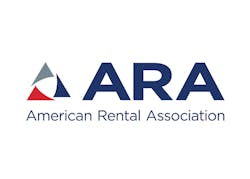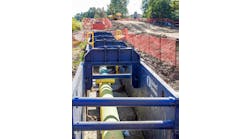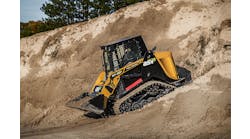Even with supply chain issues and labor shortages, U.S. equipment rental revenue, including both construction and general tool, is expected to grow by 11.1 percent to reach nearly $56 billion in 2022, according to the latest quarterly forecast recently released by the American Rental Association.
Construction equipment rental is leading the way, with 13 percent growth this year to total $41.7 billion in revenue following a 10.2 percent increase in 2021. General tool in 2022 is expected to grow 7 percent to reach $14.1 billion.
While equipment rental revenue growth slows to 6 percent in 2023, 2.9 percent in 2024, 3.6 percent in 2025 and 3.9 percent in 2026, the industry is expected to surpass $60 billion in 2024 and is forecast to reach $65.5 billion in 2026.
“One thing we know is that rental revenues grow when the fleet expands or when rates increase,” said John McClelland, Ph.D., ARA vice president for government affairs and chief economist. “In reality, both things are happening today. However, supply chain issues are inhibiting fleet growth while inflation is pushing rates higher. In the past we saw a lot of revenue growth that we attributed to fleet growth. Now we are seeing revenue growth that is being driven by higher rates.”
S&P Global Market Intelligence, formerly IHS Markit, the forecasting firm that compiles data for the ARA forecast and the ARA Rentalytics subscription service, also revised the previous estimate for 2021 equipment rental revenue from $47.9 billion up to $50.2 billion in the latest quarterly update.
The revision did not have much of an impact on the industry’s growth rates expected for 2022 and beyond but reflect a larger total than in previous forecasts.
Scott Hazelton, director, S&P Global Market Intelligence, said that while the forecast drivers behaved pretty much as expected throughout the year, inflation and rental rates took off more than expected in the second half of 2021 with the fourth quarter coming in stronger, necessitating the increase in the revenue estimate for last year.
“The strong, double-digit growth outlook for 2022 is a function of stable underlying demand compounded by inflationary pressures that will allow, indeed require, rate increases,” Hazelton said. “The underlying construction market will be relatively soft with both residential and nonresidential structural spending under pressure, although we will begin to see the nascent impact of the Infrastructure Investment and Jobs Act. However, we don’t expect any retrenchment in construction, while the manufacturing, and especially energy, sectors will offer improvement.
“Meanwhile, price pressures are rippling through the economy, impacting producer prices in some cases even more than the better published consumer price indexes. Supply chain constraints are endemic throughout manufacturing, including construction and materials handling equipment. The result is shipment delays and a scarcity of equipment. Rental companies are more likely to be able to provide equipment more quickly than any dealership, which gives them pricing power,” he said, adding that Federal Reserve intervention with interest rate hikes and an improving supply chain will eventually provide relief from price escalation, but probably not until 2023.
The revenue forecast for Canada is similar to the U.S. with 9.6 percent growth in 2022 to reach $4.5 billion followed by increases of 6.4 percent in 2023, 3.8 percent in 2024, 2.1 percent in 2025 and 1.8 percent in 2026 to $5.2 billion.







